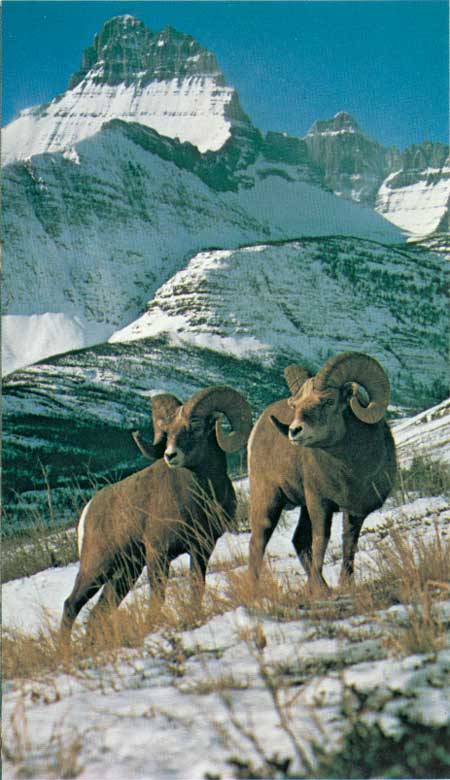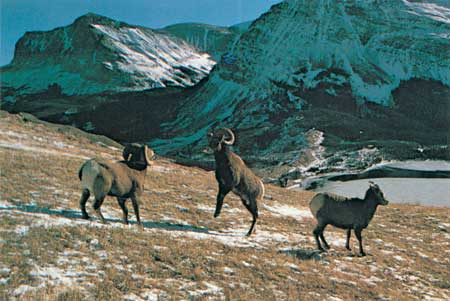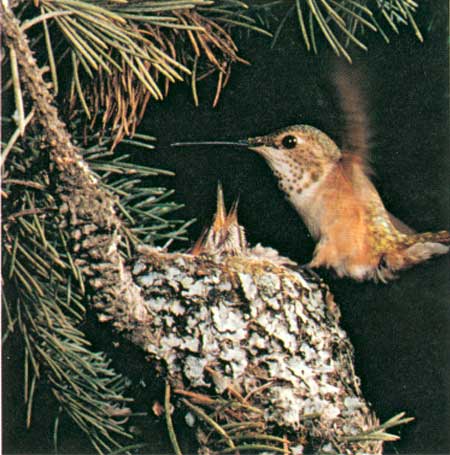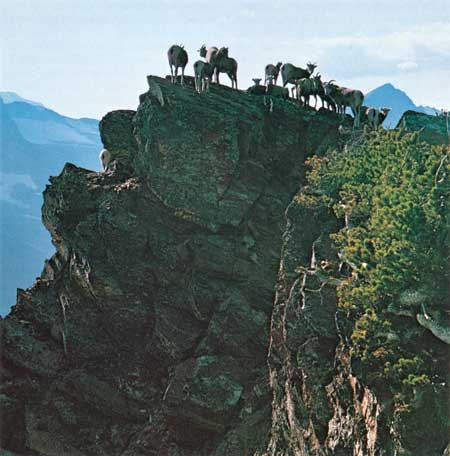|
GLACIER National Park |
 |
 Unlike mountain goats, these bighorn rams will desert the alpine zone at the approach of winter; they will join other bighorns congregating in the lower valleys. |
 In November bighorn sheep rams end their summer-long isolation from the ewes, move down from the higher slopes, and begin a bloodless but taxing ritual of strength and endurance to determine the harem master. The sharp reports of clashing horns may carry for kilometers, and the contests continue for weeks until the dominant ram emerges. (Note the Many Glacier hotel complex in the valley below.) |
 Hummingbirds, like shrews and other small-bodied, warm-blooded animals, exist at the theoretical threshhold of life. Because of their small size, body volume is not large enough in relation to surface area to prevent a rapid loss of body heat. To compensate for this, metabolic rates must be high: food is rapidly processed and used up. Thus, since fat reserves are not practical on such small animals, they must eat at frequent intervals. Two species of hummingbirds—the rufous and the calliope—are found in Glacier. Pictured is a female rufous (which weighs about the same as a dime) landing on its lichen decorated nest to feed its two young on a protein-rich mixture of nectar and small insects. |
 The insect-eating yellowthroat prefers moist habitats. unlike many of its treetop-dwelling relatives, this tiny (10-11 cm.) warbler is usually seen near or on the ground. |
 Bands of bighorn ewes and lambs do not summer as high as the rams and are often encountered in the scrub-forest zone, Note the gnarled limber pine in the foreground of this photograph taken on the south face of Altyn Peak. |

|

|
|
|
|
Last Modified: Sat, Nov 4 2006 10:00:00 pm PST |


